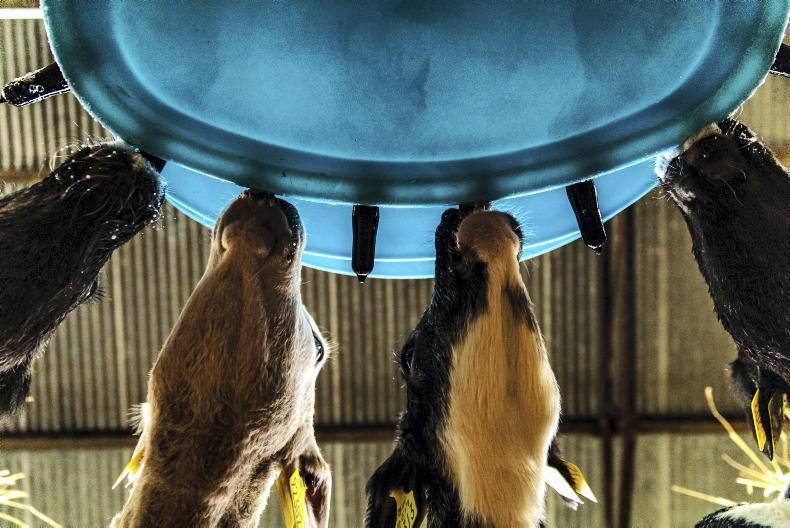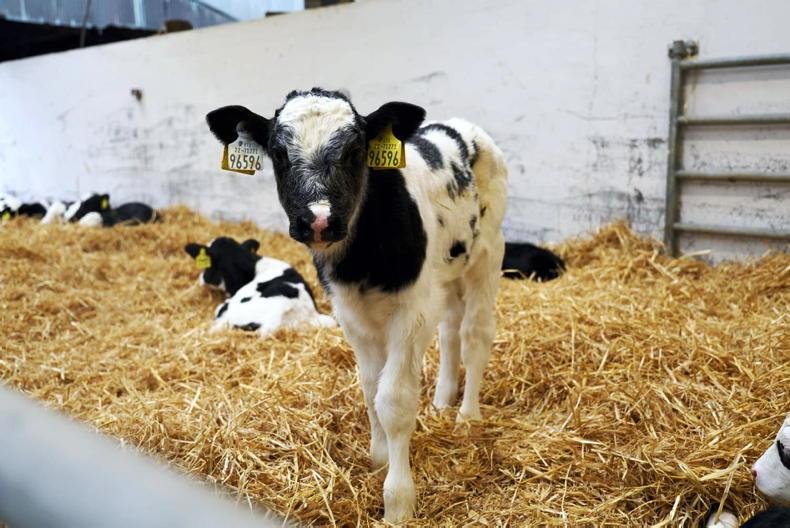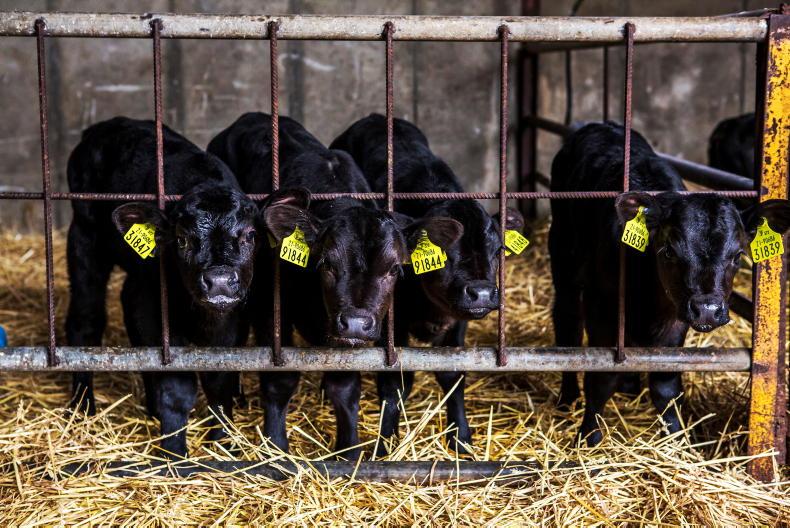Every calf on the Thrive programme is AI-sired from herds with a known health status. The programme is returning to these herds year after year and therefore we can be confident that calf and colostrum management on the farms of origin is excellent.
Mortality across the entire programme has been running at under 4% for the last three years which speaks for itself.
On arrival to the demo farm, the majority of calves are between two and three weeks old.
Most calves are within an hour’s drive from the farm, so there is little stress on the calf when they arrive. The typical protocol is that they receive their morning feed on the dairy farm, are loaded on to the trailer mid-morning and are on the demo farm by lunchtime.
They are housed in batches of 10 and allowed to settle into their new surroundings and receive their first feed that evening.
From arrival, calves have access to a starter ration to encourage meal intake, a fibre source in the form of barley straw in a rack and a constant source of fresh clean water.
Vaccination
The next day calves receive an intranasal pneumonia vaccination (RSV and Pi3). Later in the rearing phase they will receive a two shot, clostridial vaccination one month apart.
After around three weeks of twice-a-day feeding, the calves will move to bigger pens of 35 calves per group. At this stage, the calves are between five and six weeks old and they are transitioned on to once-a-day feeding. This changeover encourages greater meal intake which sees calves eating 1kg/day concentrate much earlier in the rearing phase. This helps to develop the rumen and eases the transition from a milk to forage diet.
Sickness
Vaccination plays a key role in animal health on the farm but you still need to be vigilant at all times.
Calves are susceptible to chills and a cold night or a northerly wind can be enough to see some calves run temperatures.
John Hally is a master at spotting a sick calf at the earliest sign. This is key to keeping calves alive and thriving. John would say that it is very easy to cure a calf if they have been vaccinated and once you get them in time.

Thrive Farm. \ Philip Doyle
Weaning
Once the weather is suitable, calves will be allowed out by day to paddocks around the yard and come back in at night. This eases the transition to grass and prepares the calf for turnout.
Once they are eating 1kg/day concentrate and are over 10 weeks old, they will start to be weaned if they are fit. This is in the region of 85kg to 90kg for early-maturing heifers, up to 105kg for late-maturing steers.
Every calf on the Thrive programme is AI-sired from herds with a known health status. The programme is returning to these herds year after year and therefore we can be confident that calf and colostrum management on the farms of origin is excellent.
Mortality across the entire programme has been running at under 4% for the last three years which speaks for itself.
On arrival to the demo farm, the majority of calves are between two and three weeks old.
Most calves are within an hour’s drive from the farm, so there is little stress on the calf when they arrive. The typical protocol is that they receive their morning feed on the dairy farm, are loaded on to the trailer mid-morning and are on the demo farm by lunchtime.
They are housed in batches of 10 and allowed to settle into their new surroundings and receive their first feed that evening.
From arrival, calves have access to a starter ration to encourage meal intake, a fibre source in the form of barley straw in a rack and a constant source of fresh clean water.
Vaccination
The next day calves receive an intranasal pneumonia vaccination (RSV and Pi3). Later in the rearing phase they will receive a two shot, clostridial vaccination one month apart.
After around three weeks of twice-a-day feeding, the calves will move to bigger pens of 35 calves per group. At this stage, the calves are between five and six weeks old and they are transitioned on to once-a-day feeding. This changeover encourages greater meal intake which sees calves eating 1kg/day concentrate much earlier in the rearing phase. This helps to develop the rumen and eases the transition from a milk to forage diet.
Sickness
Vaccination plays a key role in animal health on the farm but you still need to be vigilant at all times.
Calves are susceptible to chills and a cold night or a northerly wind can be enough to see some calves run temperatures.
John Hally is a master at spotting a sick calf at the earliest sign. This is key to keeping calves alive and thriving. John would say that it is very easy to cure a calf if they have been vaccinated and once you get them in time.

Thrive Farm. \ Philip Doyle
Weaning
Once the weather is suitable, calves will be allowed out by day to paddocks around the yard and come back in at night. This eases the transition to grass and prepares the calf for turnout.
Once they are eating 1kg/day concentrate and are over 10 weeks old, they will start to be weaned if they are fit. This is in the region of 85kg to 90kg for early-maturing heifers, up to 105kg for late-maturing steers.











SHARING OPTIONS